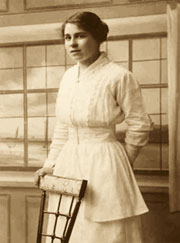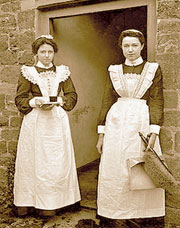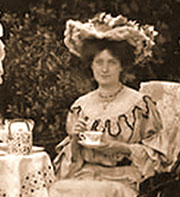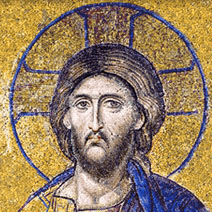This is the front page of my Hagia Sophia mosaics website with links to all the pages and icons.
Care of Lamps
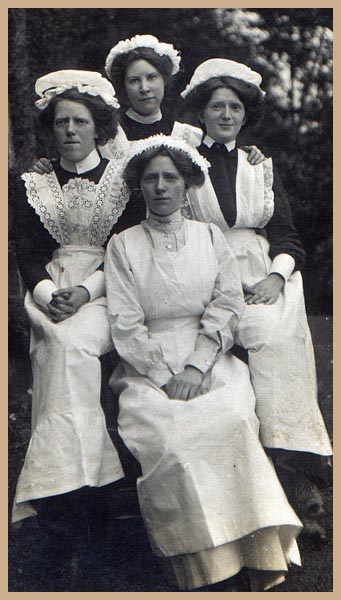 Do not leave the care of the lamps until daylight is past; no one of the waitress's duties requires more painstaking or better light in the doing. A lamp giving a clear light and without offensive odor can be had with proper care. The essentials are absolute cleanliness of lamp, burner, chimney, and wick. As a partially filled reservoir provides a place for the accumulation of gas, and, when the lamp is lighted, an explosion, all lamps that have been lighted should be filled daily. Daily attention should also be given to trimming the wick and wiping the burner, the outside of the lamp, the shade, and the chimney. A tin tray holding the various utensils needed furnishes a good place for this work; otherwise spread several sheets of newspaper over a table and upon this set the various parts of the lamp while at work.
Do not leave the care of the lamps until daylight is past; no one of the waitress's duties requires more painstaking or better light in the doing. A lamp giving a clear light and without offensive odor can be had with proper care. The essentials are absolute cleanliness of lamp, burner, chimney, and wick. As a partially filled reservoir provides a place for the accumulation of gas, and, when the lamp is lighted, an explosion, all lamps that have been lighted should be filled daily. Daily attention should also be given to trimming the wick and wiping the burner, the outside of the lamp, the shade, and the chimney. A tin tray holding the various utensils needed furnishes a good place for this work; otherwise spread several sheets of newspaper over a table and upon this set the various parts of the lamp while at work.
WICKS AND BURNERS
The wicks should fill the whole space in the burner and yet turn easily up and down. To clean, with a pair of sharp scissors cut off the burned portion straight across, leaving no projecting points, then wipe the burner inside and out. Many advocate rubbing rather than cutting the burned portion. The main point is to remove it evenly. Any of this wick left, after cutting, upon the burner itself or in the air space around it, will, when heated, prove very offensive indeed. Make sure that no particle is left upon any' part of the burner. About once a month remove the wick and wash the burner in hot, soapy water, then rinse and dry. When the burners are in order, fill the lamps, leaving an inch space at the top, that running over, for any reason, may be avoided. Now screw the burners in place firmly and wipe the outside of the lamp.
CLEANING CHIMNEYS
If the chimneys have been smoked, wipe them on the inside with soft tissue paper, then wash in warm water to which a little household ammonia has been added; rinse in warm water and dry with a soft cloth. Chimneys need to be left absolutely dry or they will break when heated.
LIGHTING AND EXTINGUISHING LAMPS
In lighting a lamp have the wick turned low to allow the chimney to expand slowly and evenly; after a little it may be turned higher, if needed. Do not leave a lamp for a few minutes after it is lighted, as after the wick is fairly alight it often proves to be turned too high. After five or six minutes it may be turned up or down to the proper point and left without much liability of accident. Never turn the wick down below the point of securing a clear light, lest the room be filled with disagreeable odor.
Avoid carrying lamps about a house, a candle is much safer. To prevent oil from being drawn up over the top of the burner, turn down the wick to the edge of the burner, after the light is extinguished.
